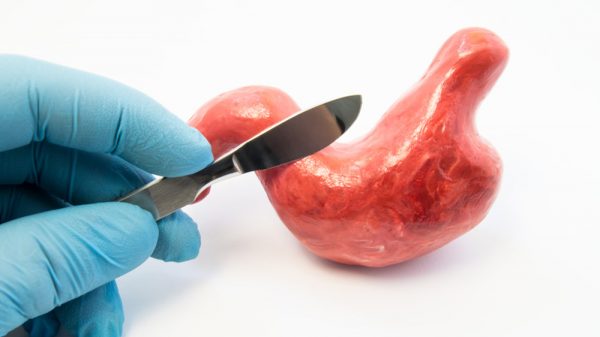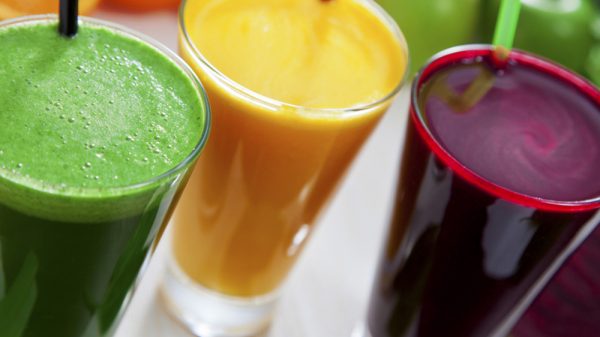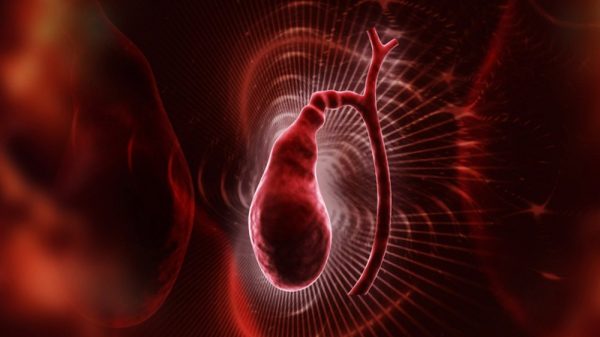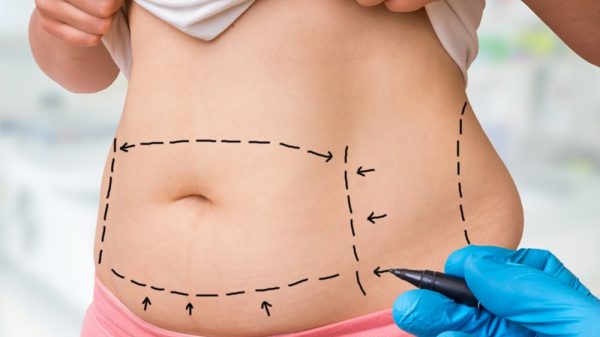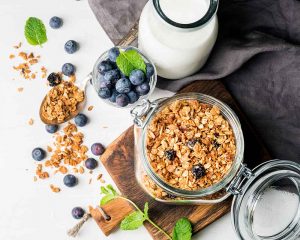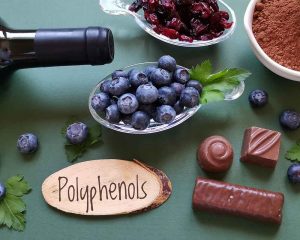The low-fat diet is one of the traditional fad diets, partially because it seems easy to rationalize. Fat must make you fat, right? Well, the story isn’t quite that straightforward. It turns out that the type of fat tends to be more important than the quantity of fat you’re eating. A low-fat diet may be beneficial in some ways, but may simultaneously deprive the body of nutrients vital for overall health. Let’s examine the impact of a low-fat diet on health and its role in fatty liver disease.
The Low-Fat Diet: How Did It Start?
The low-fat diet fat began several decades ago, with the popularization of research that highlighted the correlation of saturated fat intake with high cholesterol and heart issues. Fat was soon labeled the culprit in contributing to obesity, metabolic syndrome, and cardiovascular disease. The low-fat diet encouraged consuming low-fat products, regardless of the type of fat.
The term “fat” – derived from the scientific term fatty acids – came to encompass all fat in general and companies responded by removing the fat in all of their products, even creating low-fat peanut butter. The caveat here was that removing fat resulted in less tasty products. So, sugar was often substituted for fat. This led to an array of processed foods that were fat-free, but high in added sugar.
However, further research confirmed that increased sugar was no better – and potentially even worse – than high-fat foods.
Let’s dig into the pros and cons of the low-fat diet.
Benefits of the Low-Fat Diet: Eliminating Saturated Fats
When focusing on eating a low-fat diet, this does discourage the consumption of unhealthy fats, such as saturated fat and trans fats. Before we get into the differences between types of fats, let’s first look at what a fatty acid actually is.
What Are Fatty Acids?
All fatty acids are comprised of long carbon chains that are bonded to each other by a single bond or a double bond. When carbons are bonded by single bonds, this allows the maximum number of hydrogen atoms to bond to each carbon. When the maximum number of hydrogens are bonded to carbons in a fatty acid chain, this fat is saturated.
When a carbon chain contains at least one double bond, the maximum number of hydrogen atoms are unable to bond to the carbon chain. As a result, the fat is unsaturated.
The number of carbon bonds and hydrogen bonds, as well as the orientation of these bonds, influence the overall structure of a fatty acids chain. The structure of a fat defines its role in the human body.
What Is Trans Fat?
Trans fat is a type of unsaturated fatty acid and is labeled as the worst fat for your health. Trans fat is a byproduct of manufactured fats and often shows up on food labels as partially hydrogenated oils. The term “trans” describes the orientation of the fatty acid chain around the double bond. The industrialization process distorts the structure of a cis fat into a trans fat, which contributes to detrimental health impacts. Trans fats have been proven to trigger inflammation and worsen all indicators of metabolic syndrome, including insulin function, fatty liver, and cholesterol levels.
What Is Saturated Fat?
Saturated fat contains only single bonds between carbons and like trans fat, is also associated with negative health outcomes. Research has tied a high intake of saturated fat to poor cholesterol levels, insulin dysfunction, and fatty liver disease. The consumption of saturated fat also contributes to atherosclerosis, which is the formation of plaques in the arteries. Plaques have the potential to block blood flow and lead to heart disease, stroke, and heart attack.
It’s important to point out that detrimental saturated fats are long-chain fatty acids from animal products. Chains of saturated fat that are medium in length have been found in coconuts and coconut products. These saturated fats are called medium-chain triglycerides and have not been associated with the negative cardiovascular effects of long-chain saturated fats.
Trans Fat and Saturated Fat: Foods to Avoid
Trans fats can be found in manufactured and processed foods.
Steer clear of these foods to lower your intake of trans fats: shortening, cookies, cakes, doughnuts, biscuits, pizza dough, French fries, fried chicken, crackers, chips, margarine, frozen pizza, and creamers.
Steer clear of these foods to lower your intake of saturated fats: whole milk, cheese, sour cream, yogurt, butter, beef, pork, ice cream, pepperoni, sausage, and palm kernel oil.
Disadvantages of the Low-Fat Diet: Limiting Polyunsaturated and Monounsaturated Fats
The problem with the low-fat diet is that it does not distinguish between different types of fat. While saturated fats and trans fats are detrimental to health, polyunsaturated and monounsaturated are the complete opposite.
What Is Polyunsaturated Fat?
If a fatty acid chain is polyunsaturated, this means there are two or more double bonds in the chain. The famously healthy omega-3 fatty acids are categorized as polyunsaturated fat. Omega-3 fatty acids are abundantly present in fish in the form of docosahexaenoic acid (DHA) and eicosapentaenoic acid (EPA). Omega-3 fatty acids can be found in plant sources in the form of alpha-linolenic acid (ALA). While trans fats and saturated fats have been associated with a high risk of heart disease, polyunsaturated fat is completely opposite.
On the contrary, polyunsaturated fats, especially omega-3 fatty acids, have been linked to improved heart health, lower systemic inflammation, better liver function, and improvement in indicators of metabolic syndrome.
Another type of polyunsaturated fat is omega-6 fatty acids, which are healthy when consumed in moderation.
What Is Monounsaturated Fat?
Monounsaturated fat is a type of unsaturated fat that results from one double bond in the fatty acid chain. Though monounsaturated fats are healthier than saturated fats, certain sources of monounsaturated fat should be consumed in moderation for optimal effects on heart health.
Healthy Sources of Polyunsaturated and Monounsaturated Fats
There are many excellent sources of polyunsaturated fats, and the American Heart Association provides an extensive list of polyunsaturated fat sources. (1)
Great sources of DHA and EPA omega-3 fatty acids include salmon, sardines, mackerel, trout, herring, anchovies, tuna, mussels, scallops, crab, and oysters
Sources of ALA omega-3 fatty acids include walnuts, pecans, chia seeds, flaxseeds, and olive oil.
Sources of omega-6 fatty acids include pumpkin seeds, sesame seeds, eggs, hemp seeds, and flax oil.
Sources of monounsaturated fats include avocado, cashews, peanuts, and olive oil.
Healthy Fats for Fatty Liver Disease
Both monounsaturated fats and polyunsaturated fats are linked to improvements in fatty liver disease.
A study conducted by researchers in Israel and published in the World Journal of Gastroenterology revealed that supplementing rats with olive oil resulted in lower levels of hepatic fat. (2) Though this study was conducted on animal models, this may have implications for human subjects as well.
In another study, researchers at the Medicine School and Department of Endocrinology and Nutrition at the University of Valladolid in Spain assessed the impact of healthy fats on patients with nonalcoholic fatty liver disease. (3) Results revealed that both the diet high in polyunsaturated fat and the diet high in monounsaturated fat were correlated with improved markers of metabolic health, including weight loss, lower blood pressure, and improved cholesterol levels. Both diets were also correlated with the mitigation of elevated liver enzymes caused by nonalcoholic fatty liver disease. (3)
Overall, research suggests that cutting healthy fats out of your diet is not a good idea.
Tailoring a Low-Fat Diet Plan to Fatty Liver Disease
The low-fat diet for fatty liver disease should instead be called the low-saturated-fat diet. The U.S. Department of Disease Prevention and Health Promotion sets dietary guidelines that recommend that adults should get between 25% and 35% of their total calories from fat, and less than 10% should come from saturated fat. (4)
For a low-fat diet that benefits fatty liver disease, try to keep saturated fat at less than 5%, with polyunsaturated and monounsaturated fatty acids providing the remaining calories from fat.
You can lower your total fat intake even further if it works for your body. However, before making any drastic changes to your diet or restricting key macronutrients, it’s a good idea to consult your health care provider and dietician to make sure your diet supports your health.

Tips for Doing a Low-Fat Diet for Fatty Liver
If a lower-fat diet works for you, here are some tips for making it work for fatty liver disease.
1. Go for Lean Meats
When choosing meat, go for low-fat options to limit your saturated fat intake. Pick out lean cuts of steak, white meat chicken, and turkey breast.
Avoid processed meats like sausage, bacon, and pepperoni. The visible fat in processed in fatty meats is an indicator that it is too high in harmful saturated fats that could jeopardize your heart health.
2. Choose Fish Over Other Animal Products
Fish affords all the benefits of meat, with the added benefits of omega-3 fatty acids and no saturated fats. Consuming omega-3 fatty acids from fish helps to reduce systemic inflammation, improve organ function, and reduce liver fat. When possible, choose wild-caught fish and seafood.
3. Choose Low-Fat Dairy Products
Full-fat dairy products are a major source of saturated fat. Consuming high amounts of saturated fat from full-fat dairy products has been associated with high levels of LDL cholesterol that contribute to the risk of heart disease. Grocery stores almost always carry low-fat or fat-free alternatives to full-fat dairy products like cream, yogurt, and milk.
4. Eat Eggs in Moderation
Eggs are great sources of healthy fats. The main concern with eggs stems from the high cholesterol content, which can contribute to poor cholesterol levels if eaten in excess. Since most of the cholesterol is concentrated in the yolk, discard the yolk and eat the whites.
5. Emphasize Plant-Based Fats from Whole Foods
Whole foods like nuts, seeds, whole grains, and veggies contain healthy polyunsaturated and monounsaturated fats. In addition, consuming fat from these sources will also make sure that you’re getting lots of fiber, vitamins, minerals, and polyphenols with potent antioxidant activity.
6. Limit Oil Use
Though certain oils are packed with healthy fats, use them in moderation. The fat content in oil is extremely concentrated – oil is simply the liquid form of fat – which can make it easy to overdo it. So, when cooking, marinating, or preparing salad dressings, try to use as little oil as possible without sacrificing taste.
7. Know Where Is Saturated Fat Hiding
Many seemingly innocent foods tend to have high levels of saturated fat. Here are the foods to look out for when limiting saturated fat:
- Salad dressings: Salad dressing that tends to be harboring high levels of saturated fats are cream-based dressings. Steer clear of Caesar and Ranch dressings, and instead substitute creamy dressings with olive oil and vinegar or avocado-based dressing.
- Whole milk: Using whole milk for your Grande latte at Starbucks adds unnecessary saturated fats to you diet. Swap whole milk for skim milk, which has the added benefit of being both low calorie and rich in high-quality protein.
- Sandwich spreads: Butter, mayonnaise, and other spreads can make it onto your sandwich without you even knowing it’s there. If you’re preparing a sandwich at home or ordering a sandwich for lunch, opt for using mashed avocado or a buttery spread made of polyunsaturated vegetable fat.
Low-Fat, Liver-Friendly Meal Ideas
Having low-fat, liver-friendly meal ideas on hand will help you adhere to a diet that is lower in fat – particularly in saturated fat – while emphasizing polyunsaturated and monounsaturated fat sources.
Low-Fat Breakfast Ideas
- Oatmeal: Oatmeal is naturally low fat and filled with fiber and antioxidants that promote metabolic health. For extra protein, antioxidants, and a little healthy fat, stir in 2 tablespoons of ground flaxseed or ground chia seeds. For an extra punch of protein, add a scoop of nonfat Greek yogurt on top. Add blueberries and sliced bananas and drizzle with a low-glycemic sweetener like agave nectar.
- Protein shake: A breakfast shake can be delicious, decadent, and low in fat! Plus, a shake can be a super easy and quick way to get the protein and calories you need to get your day going. Frozen bananas, frozen blueberries, and frozen dragon fruit to a blender. Use low-fat milk of your choice, like skim milk, almond milk, or cashew milk. Add your favorite low-fat protein powder or essential amino acid powder. Feel free to experiment with your favorite fruit-to-water ratio for your preferred consistency. If you want extra sweetness in your smoothie, add two pitted dates before blending.
- Egg-white omelet: An egg-white omelet affords lots of protein, very little fat, and the opportunity to incorporate lots of veggies! Plus, egg whites are low in calories (just about 50 calories each), so you can eat several at a time without overdoing your calorie intake. Before cooking egg white for your omelet, prepare any veggies you might want to use, such as mushrooms, peppers, onions, and spinach. Chop the vegetables, sauté in a drizzle of avocado oil, and set aside. Then, add three or four egg whites to the hot pan. When the translucent egg white begins to turn opaque and white, add the sautéed veggies to the center of the pan. Sprinkle with salt, pepper, and low-fat mozzarella cheese before folding over into an omelet.
Low-Fat Lunch Ideas
- Tofu sandwich: If you love club sandwiches filled with meat and cheese, try this lower-fat alternative. Spread a layer of hummus on two pieces of toasted whole-grain bread. Then, on top of the bread, layer smoked tofu, sun-dried tomatoes, and sautéed escarole in garlic and a little bit of olive oil. Top off the sandwich with the other slice of toasted bread.
- Salad: A salad for lunch doesn’t have to be boring or leave you hungry after lunch break. To make a filling, low-fat salad, use chopped spinach, kale, and red cabbage as your base. Top with generous portions of cooked quinoa and lentils, and a few strips of grilled chicken breast. Drizzle your favorite low-fat, low-sugar salad dressing.
Low-Fat Dinner Ideas
- Chili with beans and meat: There’s nothing quite as satisfying as a hot bowl of chili on a cold winter evening. Instead of using ground beef for the chili recipe, choose ground white turkey meat. Sauté the ground turkey with chopped onions, green bell peppers, garlic, salt, and pepper. Add diced tomatoes, chicken broth, black beans, and kidney beans. Season with cumin, chili powder, paprika, and a bay leaf. Serve over brown rice.
- Salmon: Prepare salmon by grilling, baking or pan-searing it. Serve with a medley of sautéed vegetables including spinach, kale, onions, peppers, and asparagus. A roasted sweet potato seasoned with salt, pepper, and a pat of vegetable-based margarine is another excellent side.
Balance Is Crucial
There are three macronutrients that supply the calories in our diets: carbohydrates, protein, and fat. Drastically restricting one of these macronutrients naturally calls for the other macronutrients to fill the energy void.
Though limiting harmful fats like saturated fat has definite health benefits, it’s a good idea to maintain balance among the three macronutrients in your diet. Healthy polyunsaturated and monounsaturated fats are a key component of a diet that’s also rich in essential amino acids from high-quality protein, and polyphenols and fiber from unrefined carbohydrates.
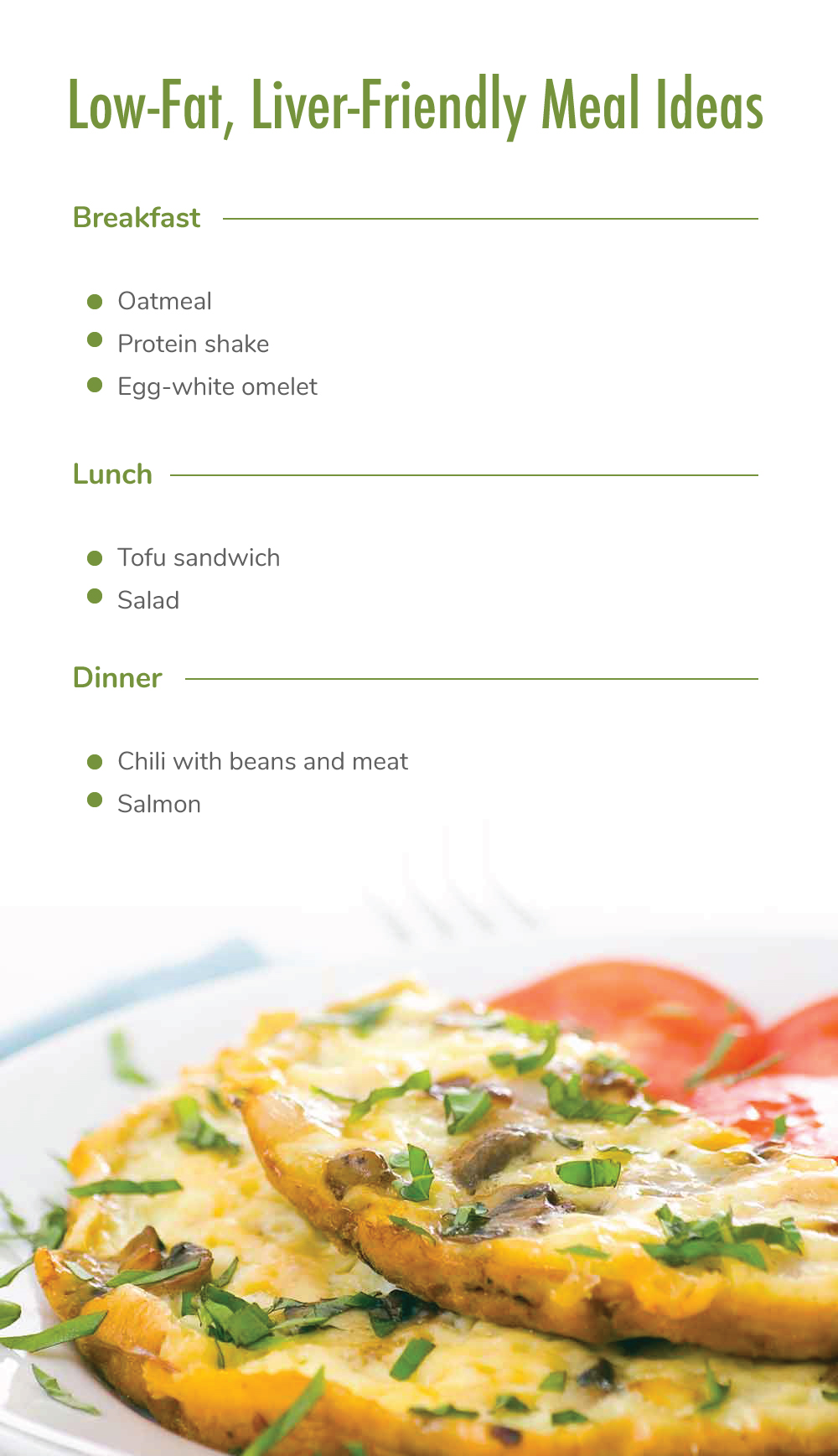
The Bottom Line
So, is a low-fat diet healthy? Yes, but only when it cuts out saturated fat and isn’t overly restrictive with polyunsaturated and monounsaturated fats. The low-fat diet was once a popular fad diet. Though it has lost its popularity, it had some validity, at least in terms of limiting saturated fat. However, getting ideal amounts of polyunsaturated and monounsaturated fat is beneficial for reversing fatty liver disease and associated conditions, like metabolic syndrome.
References:
(1) https://www.heartfoundation.org.au/images/uploads/main/Programs/Sources_of_omega_3.pdf
(2) https://www.ncbi.nlm.nih.gov/pmc/articles/PMC4065889/
(3) https://www.ncbi.nlm.nih.gov/pubmed/24763885
(4) https://health.gov/our-work/food-nutrition/2015-2020-dietary-guidelines/guidelines/appendix-7/
